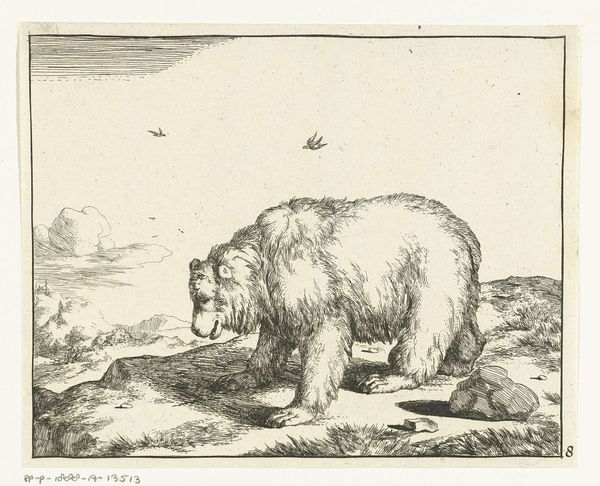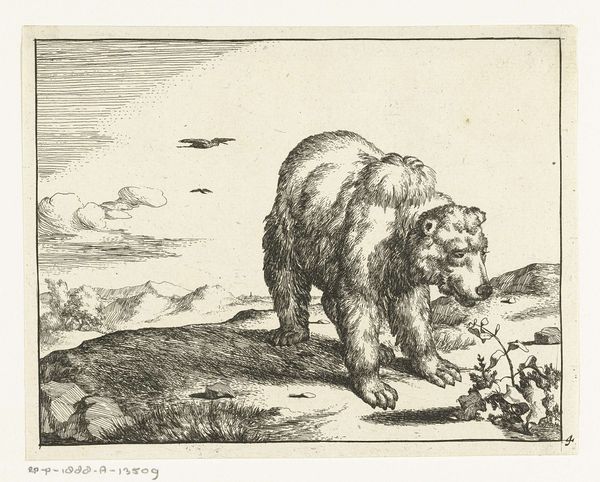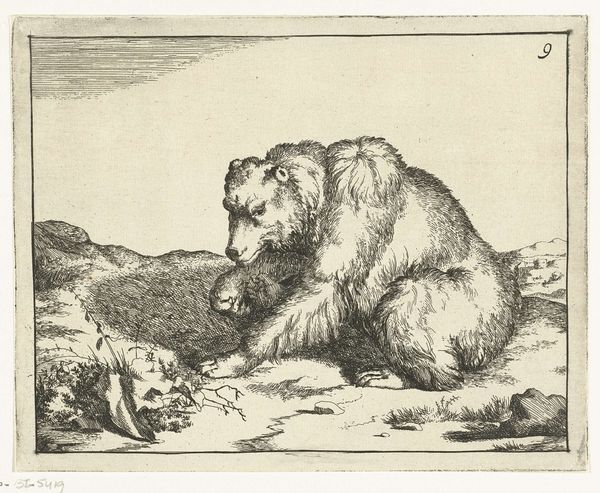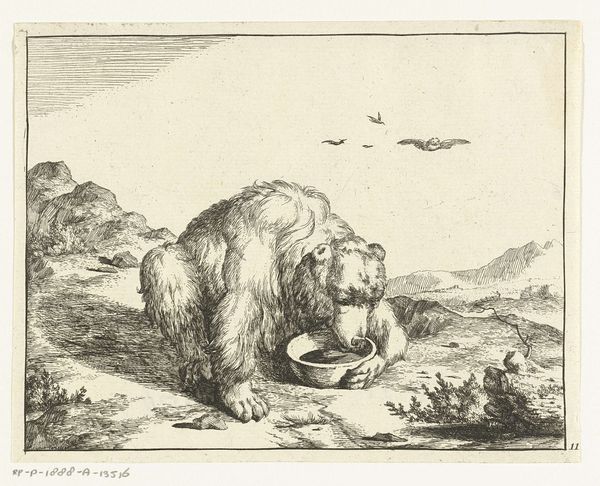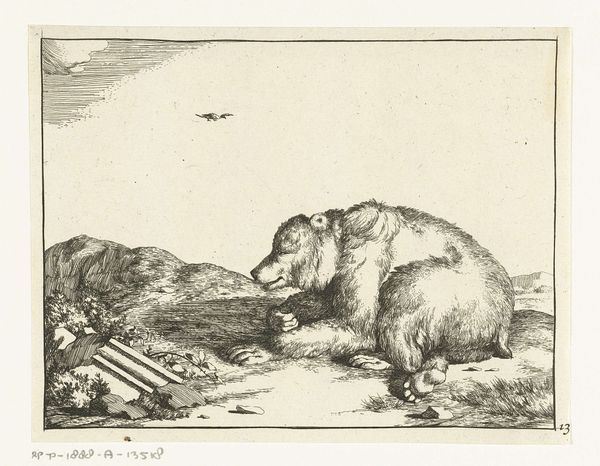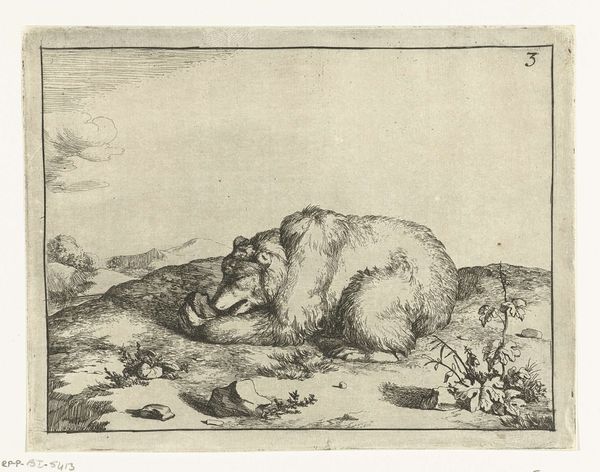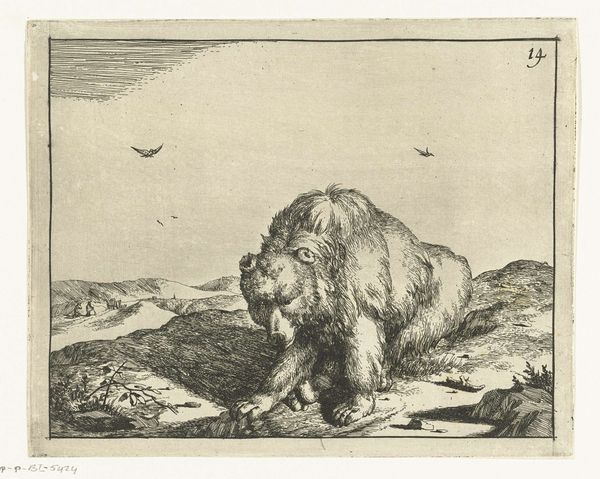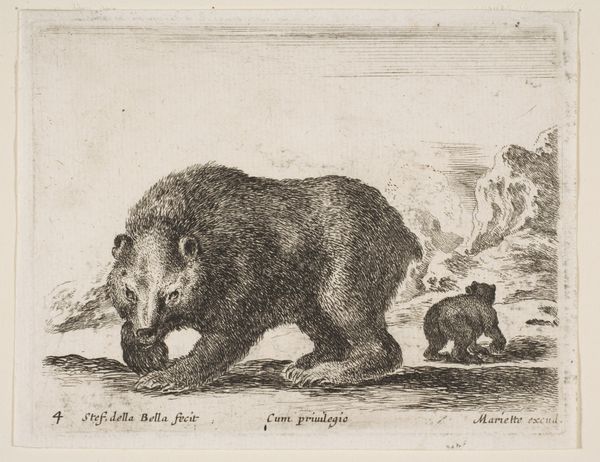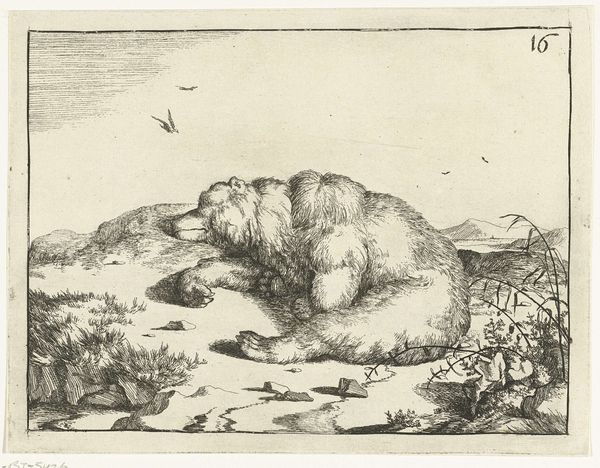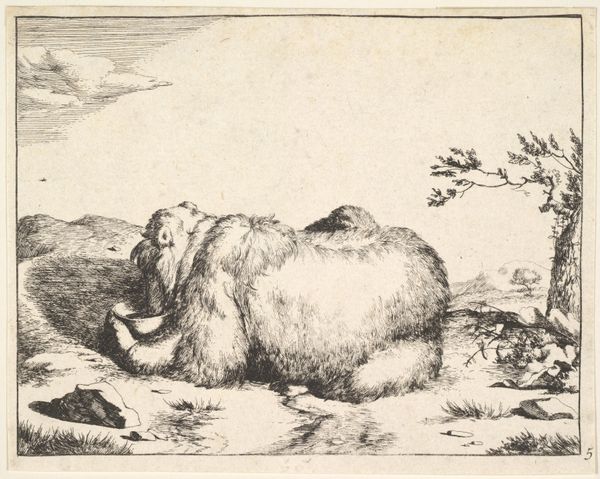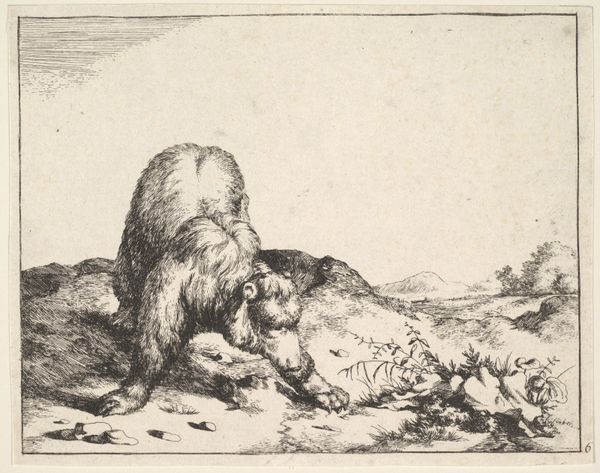
etching
#
etching
#
old engraving style
#
landscape
#
genre-painting
#
realism
Dimensions: height 114 mm, width 143 mm
Copyright: Rijks Museum: Open Domain
Marcus de Bye etched this image of a bear with its tongue lolling out, sometime in the 17th century. It's a peculiar image, this languid beast, and invites us to ponder the shifting symbolism of the bear across cultures. In many traditions, the bear represents strength and courage, a symbol of untamed wilderness. Yet, here, de Bye presents a bear in repose, almost melancholic. This imagery resonates with ancient depictions of animals in heraldry, where the bear signifies bravery, but also a protective, nurturing quality. Consider the medieval bestiaries, where animals were imbued with moral lessons; our contemporary understanding of animal symbolism has evolved, influenced by shifting cultural values and scientific understanding. The bear, once a symbol of fierce power, can now also evoke vulnerability, reflecting our complex relationship with the natural world. This image, therefore, is more than a mere depiction of an animal; it is a reflection of our changing perceptions, our enduring fascination with symbols, and how these evolve through time.
Comments
No comments
Be the first to comment and join the conversation on the ultimate creative platform.
